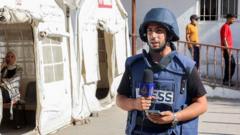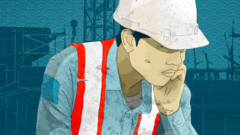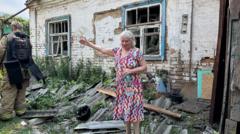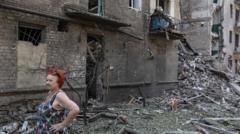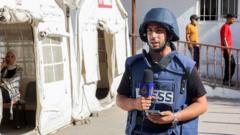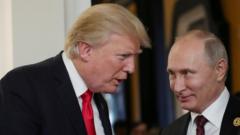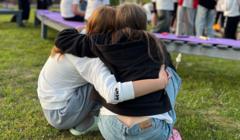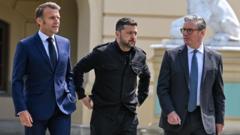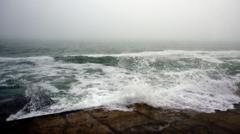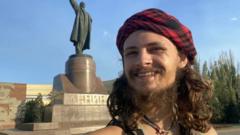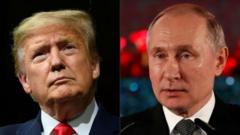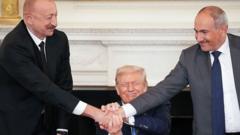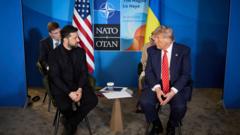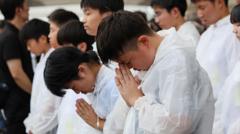Over the past three years, numerous photojournalists in Ukraine have transitioned from documenting joyful moments to capturing the devastating realities of war. With powerful images and emotional narratives, they reveal personal sacrifices while striving to convey the experiences of those affected by the conflict. This article shares the stories and insights from Ukrainian photographers who bear witness to both suffering and fleeting moments of joy amidst the destruction.
The Human Lens: Ukraine's Photojournalists Document the Harrowing Realities of War
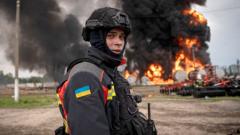
The Human Lens: Ukraine's Photojournalists Document the Harrowing Realities of War
Ukrainian photojournalists brave the front lines to capture the profound emotional and social impacts of the ongoing conflict, sharing poignant stories of loss, duty, and resilience.
In the three years since the start of Russia's full-scale invasion of Ukraine, a multitude of photojournalists have taken to the front lines to document the profound human consequences of this ongoing conflict. This article sheds light on several of these dedicated individuals, highlighting their experiences and the emotional toll of their work.
Husband and wife duo Vlada and Kostiantyn Liberov, once wedding photographers in Odesa, have shifted their focus to capturing the stark realities of war. "We moved from capturing love stories to documenting Russian war crimes," recalls Vlada, who has suffered injuries herself. Kostiantyn’s gripping photographs, such as one showcasing the emotional turmoil of soldiers returning from a harrowing mission, unveil the heavy burdens that come with warfare. “To lose your friend inside Russia, rather than defending Ukraine, is particularly complex,” he reflected.
The toll of war on local photojournalists is significant—particularly emotional tolls that often go unshared among colleagues. Vlada recounted an encounter with a police unit trying to convince civilians to evacuate under dire circumstances, only to face the haunting possibility of their return being thwarted by further violence. "It hurts knowing you cannot go back to these places," she expressed.
Another chronicler of these devastating events is Valeria Demenko, who has been documenting rescue teams in the northeastern Sumy region since 2016. A tragic memory etched in her mind is the recovery effort after a high-rise building collapse due to Russian shelling. She emphasized her colleagues’ relentless dedication amid emotional exhaustion, stating, "We give every last ounce of strength to document Russia's crimes against peaceful Ukrainians."
In the eastern Donetsk region, Alexander Ermochenko has also recorded the complexities of war for over a decade, extending his lens even into Russian-controlled territories. He pointed out the shared pain experienced by all—those affected by the war on either side of the front lines. He stated, "The fear on the face of the owner of a destroyed house is the same on both sides."
The challenges of operating as journalists within heavily restricted territories are significant, and the war’s persistent toll extends beyond just the battlefield. For many, including Alina Smutko, the fight has deeply personal implications. She has witnessed missile strikes from her own home and expresses a sense of obligation to convey the realities of warfare through her photography. "I think that documenting is important. Because if something hasn't been photographed, it hasn't happened," she concluded.
As these photojournalists continue to capture the essence of the ongoing war, they persevere through grief and duty, providing the world with an unfiltered glimpse into lives irrevocably altered by violence and loss, as well as moments of profound humanity.

